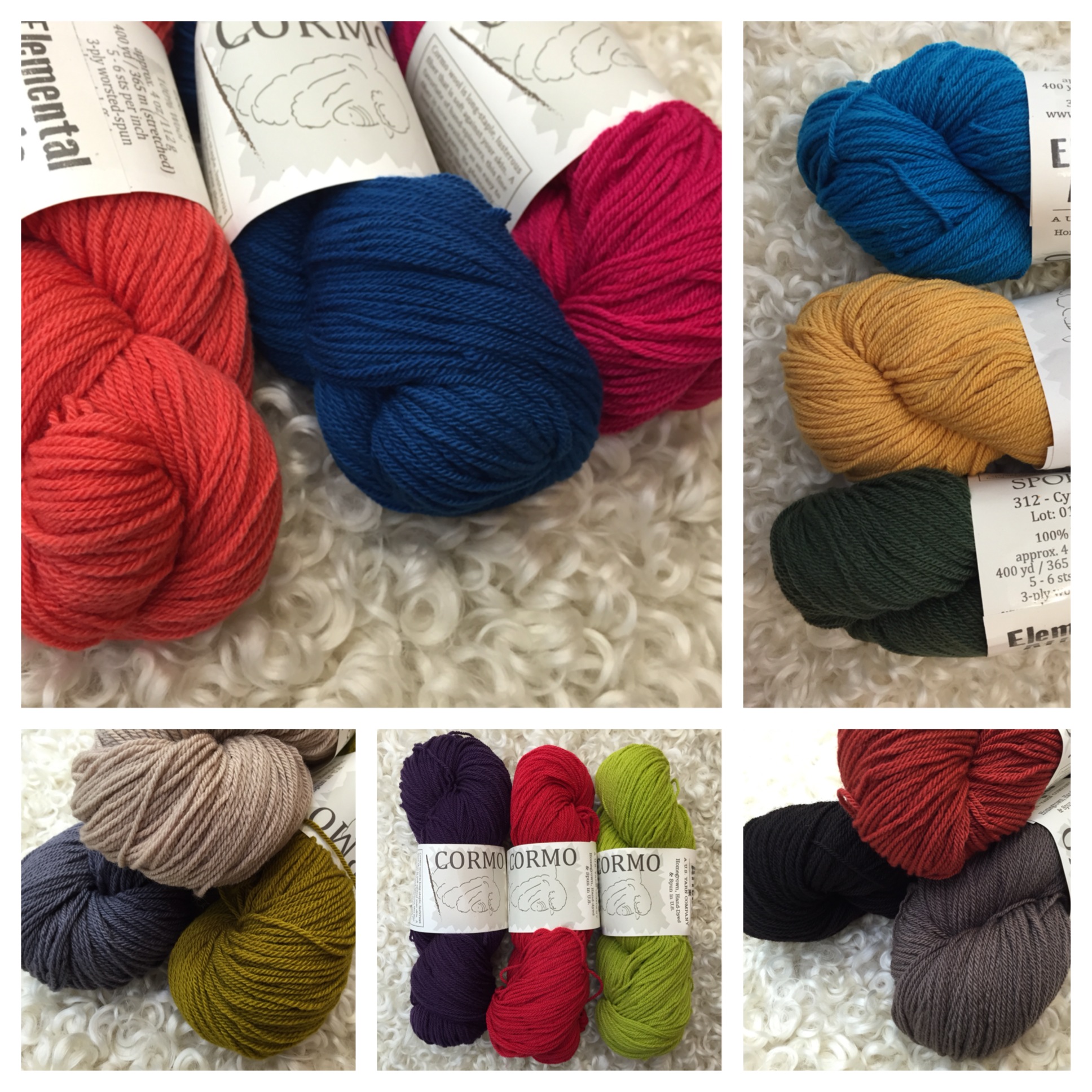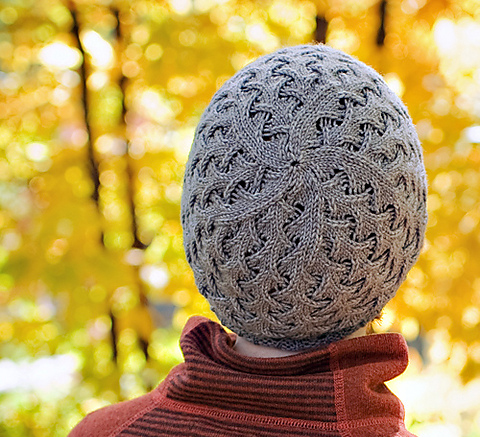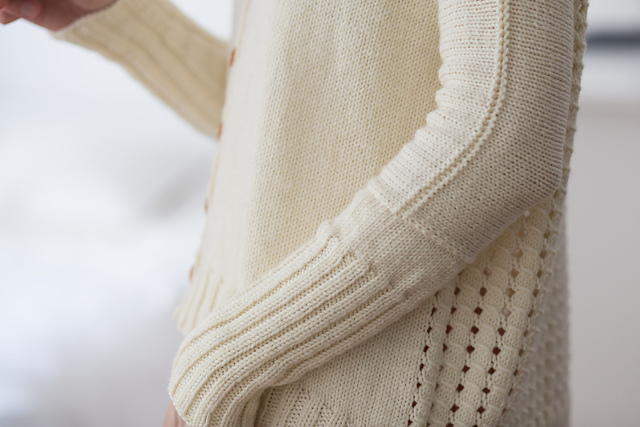
As luck would have it, it’s all in the name.
The origin of Elemental Affects, owner Jeane deCoster said, was prompted by an unavailable domain. Undeterred, she did a little research. “Most people don’t really know the difference between (effect and affect),” she said. “‘Effect’ is usually used as a noun but ‘affect’ is not.” More importantly, affect, the verb, means to “have an effect on; make a difference to; touch the feelings of (someone); move emotionally.”
The changing of a single letter resulted in a name with a much deeper meaning (and, yes, an available domain!). “I ended up with Elemental Affects,” she said, selling yarns that are in essence, if not actually, elemental — wool, silk, etc. — and that touch the feelings of knitters, evoking an emotional response. The name was meant to be.
Since we’re harkening back to the origin story, like many businesses before it, Elemental Affects got its start in a garage. Jeane said while it’s unlikely she’ll end up a multimillionaire, over the past 10 years her company has grown from its homegrown start to a dedicated studio.
We interviewed Jeane to find out more about her amazing yarn — she’s both a hand dyer and a yarn producer —and get the scoop on the Cormo Sport (400 yards, 100% Cormo wool) that’s just landed at fibre space.
Q: Tell us a little bit about Elemental Affects and how you got started in the yarn industry. What makes it unique?
A: “My background is an odd combination of the creative (I have a bachelor’s degree in fashion design, plus five years working in the fashion industry) and technical (20ish years in IT). I’ve been knitting since I was a tyke but learned to spin (and about all things fiber) while working in IT.
“I was working and living in New York when I saw the writing on the wall with my career being mergered and shifted overseas. So, I started looking into any resources available to help leverage both my hobby and technical skill-sets into a viable business expertise. I couldn’t find anything in the U.S. that would work for me, so I started working with a distance learning program in New Zealand. Then, planes started hitting nearby office buildings and I decided it was time to leave New York and take the leap into starting my own business. So, I moved back home and started putting my business plan together.
“My focus is ‘hand-dyed, breed-specific, intentional yarn — made in the U.S.’ It’s kind of a weird phrase, but it means that I buy my raw materials (fiber) as close to the source as possible — in most cases, that means working directly with the breeders. I then work with our few remaining commercial mills to design yarns that express the unique qualities of the fiber and result in yarns that will be pleasing to hand knitters and weavers. Then, of course, I often find myself working directly with my stores to help build markets for some of the more unusual yarns — i.e., the ‘not soft’ Shetand and Romney yarns.”
Q: What distinguishes Cormo wool from Merino, and where is your wool sourced from?
A: “I source my Cormo wool from a couple of ranches in Wyoming and Montana. Cormo and Merino are very (very!) closely related. It seems to have been defined as a specific breed with the name ‘Merino’ sometime (maybe) in the 13th century. But, evidence of that type of sheep (in quantity) is around in Spain since Roman times. Today, you can find multiple registries for multiple types of Merino sheep and fleece ranging in diameter from as soft as cashmere up to something too coarse to wear against the skin. Today, Merino is a pretty ubiquitous name for all fine wool in the world.
“I think of Cormo as the best of Merino … on steroids. Cormo is a fairly modern crossbreed of some of the finest Merino bloodstock with Corriedale — which is, itself, a cross between Merino and Lincoln — the result being very fine, soft white fleece that has a bit more strength, length and luster than the average, everyday Merino. These qualities lend themselves to creating a perfect wool knitting yarn. Along with the choice of Cormo that is measured at approximately 21 microns, I 3-ply worsted spun yarn with a little extra twist to exploit the length, strength and luster — resulting in a beautiful wool knitting yarn that is very resistant to pilling!”
Q: Is there anything knitters and crocheters should know about your Cormo Sport yarn that will help them match patterns to the yarn?
A: “My Cormo yarn is very strong and very resistant to pilling. In addition, it is a highly resilient yarn (think stretchy)! A length of yarn 12 inches long (relaxed) can easily stretch to 18 inches long! This means a few things to the knitter … 1) Because we don’t knit a fully relaxed length, and there’s no way to measure an “in between” length, the length of yarn on the label is at its fully stretched length; 2) Because we also don’t knit at fully stretched length, if you are using this yarn as a substitute, I’d buy about 25% more yarn length than quoted for the pattern.
“When knitting with the Cormo yarns, I also find that I am often working with needles that are larger than suggested by the weight of the yarn. For an extreme example of that, I am working on a design for the Cormo fingering yarn using size 8 needles without getting any lace-like holes in the cloth. On a less extreme basis, I often suggest that knitters go up a needle size or two to get gauge when they are substituting. Also, if they get stitch gauge but not row gauge, think about that resiliency thing again. As you knit, you are stretching the yarn under tension around the needle. As soon as it comes off the needle, it wants to retract into its not-stretched state. This can result in more rows to the inch than you expect. So, because of the physics of loops and stretch, changing to a larger needle size can result in the same stitch gauge and a looser (fewer rows to the inch) row gauge.”
A few project ideas

The gorgeous Autumn’s End sweater by Alana Dakos, from her book “Botanical Knits,” available in space, would look stunning in any of the Cormo Sport colorways.

If you can’t commit to a sweater, go for Stax by Carina Spencer, which can be made as either a beanie or a slouch hat.

A twist on the classic cardigan, we love the mod silhouette and textures of Rhilea, by Suvi Simola.

Antiquity by Alicia Plummer is going straight to the top of the Rav queue. They’re an instant classic!

Kids need hand knits, too. One of our favorites is the Wowligan. Because, owls + kids + hand knits = ultimate cuteness!

